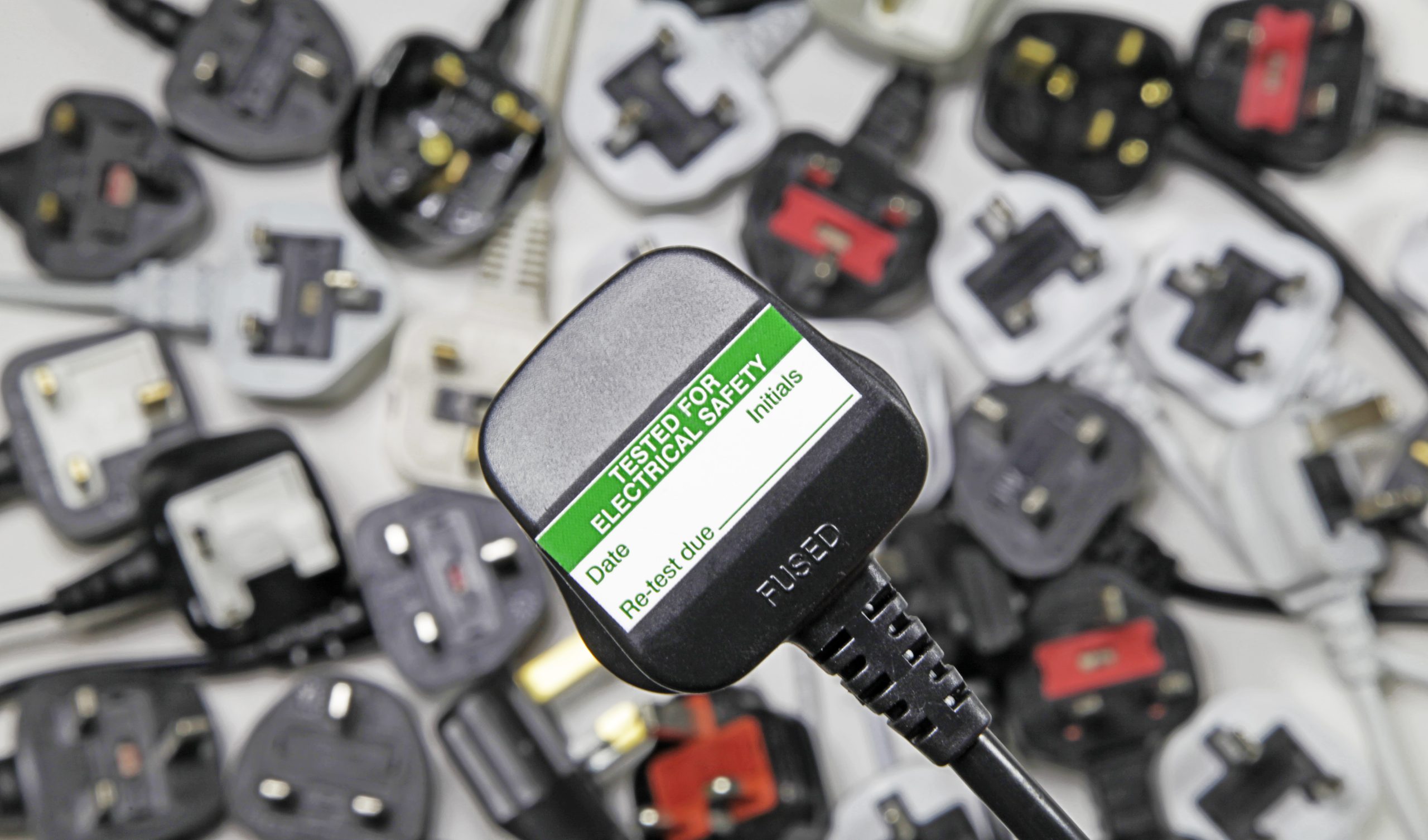Understanding the Difference: EICR vs. PAT Test – What You Need to Know
Understanding the distinction between an Electrical Installation Condition Report (EICR) and a Portable Appliance Test (PAT) is crucial for maintaining electrical safety in various settings. While both assessments focus on electrical systems, the EICR primarily examines the fixed wiring within a property to ensure it meets safety standards, while the PAT concentrates on the safety of portable electrical appliances. Delving into the specifics of each test will clarify that although they share the goal of ensuring electrical safety, the EICR and PAT tests serve distinct purposes. This detailed exploration will shed light on the nuances of these essential electrical safety assessments and provide valuable insights for property owners and businesses alike.
Introduction to Electrical Safety Testing
Understanding EICR
An Electrical Installation Condition Report (EICR) is a formal document produced after an assessment of the electrical installations within a property. This comprehensive inspection covers the condition of the electrical wiring, circuits, and fixed electrical equipment, ensuring that they are safe and up to current standards. A qualified electrician usually carries out the EICR and checks for any signs of wear and tear, damage, or any other situation that may pose a safety risk. The inspection includes a review of the earthing and bonding, consumer unit, light fittings, and socket outlets, among other fixtures. Once completed, the report details any observed defects, categorising them based on the level of danger they present. It’s essential for landlords, homeowners, and business owners to understand that EICR is not the same as a PAT test, as it does not cover portable appliances.
Understanding PAT Test
A Portable Appliance Test (PAT) is a process by which electrical appliances are routinely checked for safety. The test is designed to scrutinize portable devices that can be moved, rather than the fixed wiring of a property. This includes equipment like kettles, computers, and extension leads that are used in residential and commercial spaces. During a PAT test, a technician checks for a range of issues such as damaged cables, faulty plugs, and inadequate wiring that could lead to dangerous situations like electric shocks or fires. Visual inspections are a component of the test, but it also involves more in-depth checks using specialised PAT testing equipment. The outcomes of these tests are recorded, and if an item passes, it is often labelled with a sticker indicating the date of the test. Unlike an EICR, a PAT test is specific to portable items, and it’s a common mistake to assume they are the same procedure.
Distinguishing EICR and PAT
Key Differences between EICR and PAT
The main difference between an EICR and a PAT test lies in the scope of their assessments. EICR is an in-depth evaluation of a property’s fixed electrical systems, including wiring, plug sockets, and light fittings. It’s a kind of health check for the building’s electrical infrastructure. In contrast, PAT testing focuses on ensuring that portable electrical appliances are safe to use and do not pose any risk to users. It’s more about the devices you plug into the system rather than the system itself.
Another key distinction is the frequency of the tests. EICRs are typically carried out at intervals depending on the type of property, for instance, every five years for rental properties. PAT tests, however, are often conducted annually to ensure continual safety of the appliances.
Finally, the personnel conducting these tests can differ. While both tests should be performed by qualified individuals, EICRs require electricians with specific qualifications in inspecting and testing electrical installations, whereas PAT testing can be carried out by someone with adequate training and experience using PAT testing equipment.
Common Misconceptions: Is EICR same as PAT Test?
A common misconception is the belief that an EICR and a PAT test are interchangeable, or that one can substitute for the other. This confusion stems from a misunderstanding of the distinct purposes each test serves. It’s crucial to recognise that while both are vital for electrical safety, they are not the same. The EICR examines the fixed electrical systems of a property, which is a broader structural evaluation. On the other hand, a PAT test applies to portable appliances only, which are items that can be moved and connected to the electrical system.
Property owners might think that if they have conducted one test, the other is not necessary. However, depending on the use of the property and the types of devices present, both tests may be required to ensure comprehensive electrical safety. It’s important for businesses and landlords, in particular, to be aware of their obligations to perform both EICR and PAT tests where applicable to fully comply with safety regulations.
Delving into EICR
Purpose and Importance of EICR
The purpose of an Electrical Installation Condition Report (EICR) is multi-fold. It is designed to identify any deterioration or defects that could potentially lead to dangerous situations, such as electrical shocks or fires. The EICR ensures that electrical installations comply with the current British Standard for electrical safety, BS 7671.
The importance of the EICR cannot be overstated. It is a critical part of maintaining a property’s safety and is legally required at regular intervals for rented properties, workplaces, and public buildings. For homeowners, while not mandatory, it is recommended to have an EICR performed periodically to ensure their home’s electrical system is safe and up to date.
An EICR not only highlights existing issues but also provides recommendations for improvements, thus preventing potential problems. It is an essential step in mitigating risks and ensuring the safety of occupants within any property. Failure to obtain an EICR when required can result in heavy fines and, more importantly, compromise the safety of individuals.
The EICR Process
The process of obtaining an Electrical Installation Condition Report (EICR) involves several key steps. Firstly, a qualified electrician must be commissioned to conduct the inspection. They will review all the accessible electrical installations, including wiring, sockets, light fittings light switches, and the consumer unit.
During the inspection, the electrician will perform tests to assess the safety of the circuits and check for any wear and tear, damage, or modifications that do not comply with the BS 7671 safety standard. They will also ensure that the electrical installations have adequate protection against fire and electric shock.
Once the inspection is complete, the electrician will produce an EICR, which details any faults found within the building’s electricity meter and system. These faults are categorised by their severity, with codes indicating whether immediate action is required. The EICR provides a clear and formal record of the condition of the property’s electrical installations, highlighting any areas that need attention.
Exploring PAT Testing
What is a PAT Test?
A Portable Appliance Test (PAT) is a routine inspection and testing process for electrical appliances that are movable rather than permanently fixed. This includes a wide range of items from office equipment like computers computer monitors, and printers to kitchen appliances like microwaves and toasters.
The purpose of a PAT test is to ensure that these appliances are safe to use and do not pose any electrical hazards. The test examines various elements, such as the integrity of the plug and the condition of the wiring inside the appliance. Both a visual inspection and more detailed tests using PAT testing equipment are involved.
The PAT tester will check electrical appliance for issues that could lead to electric shock or fire, including damaged cables, incorrectly wired plugs, and faulty insulation. After the testing, each appliance is typically labelled with a pass or fail sticker, and a detailed report is provided, which summarises the findings and any actions required.
The Process and Importance of PAT Testing
PAT Testing, or Portable Appliance Testing, is a critical process for ensuring the safety of portable electrical appliances. It involves both a visual inspection to identify any obvious damage, as well as a series of electrical tests to verify the integrity of the appliance’s internal wiring and components.
The importance of PAT testing lies in its role in preventing electrical accidents in the workplace and in rented properties. Regular testing helps to identify and rectify potential hazards before they can cause harm. This not only ensures the safety of users but also helps businesses and property owners comply with Health and Safety regulations and the Electricity at Work Regulations.
Once tested, appliances are usually labelled with a date and the result, creating a clear record of maintenance. This process not only promotes safety but also demonstrates due diligence and a commitment to maintaining high safety standards.
Choosing the Right Test for Your Needs
When to Choose EICR
Choosing to conduct an Electrical Installation Condition Report (EICR) is essential in several scenarios. Property owners or managers should opt for an EICR to assess the health and safety executive all of the electrical systems in a building. This is particularly important for landlords, as they are legally required to ensure the electrical installations in their rented properties are safe when tenants move in and maintained in a safe condition throughout its duration.
For those purchasing a new home or commercial property, an EICR can provide peace of mind by revealing the condition of the electrical system before the transaction is completed. Additionally, following any significant alteration or addition to the electrical installations of commercial buildings, an EICR is recommended to ensure compliance with the BS 7671.
Business owners should also perform regular EICR checks to ensure safety comply with the Electricity at Work Regulations and to ensure the safety of their employees and customers. The frequency of these checks will depend on the type and usage of the building, with high-risk environments necessitating more frequent inspections.
When to Choose PAT Test
A Portable Appliance Test (PAT) is the appropriate choice when the goal is to ensure the safety of portable electrical devices. Businesses should perform PAT tests regularly to comply with the Electricity at Work Regulations, which help to prevent workplace accidents related to electrical equipment.
PAT testing is also crucial in environments where appliances are heavily used or are likely to suffer damage, such as in construction sites, kitchens, and schools. Additionally, landlords may choose to conduct PAT tests on provided electrical appliances to ensure tenant safety and maintain property standards.
For event organisers who use temporary electrical setups, PAT testing is vital to ensure that all equipment is safe for public use. Finally, any company whose employees use portable electrical tools or appliances should consider PAT testing as an integral part of their health and safety policy. Regular testing not only keeps users safe but can also reduce the risk of costly downtime due to equipment failure.
Seeking Professional Advice
When it comes to electrical safety, seeking professional advice is paramount. Qualified electricians or electrical engineers are best equipped to recommend whether an EICR or PAT test is required, based on the specific circumstances of your property or business. These professionals can assess the types of electrical systems and appliances you have, the frequency and type of use, as well as the applicable legal requirements.
Professionals will also be able to schedule the tests at appropriate intervals. For electrical safety inspection for example, an EICR might be required less frequently than a PAT test, but the exact timeline can be determined by a specialist who understands the nuances of the regulations and the wear and tear of electrical installations.
Furthermore, if any issues are found during a periodic inspection or an EICR or PAT test, a professional can provide the necessary guidance on the steps to remedy the problem. By involving experts, you ensure that you are not only compliant with the law but also committed to the safety of your property and its users.

